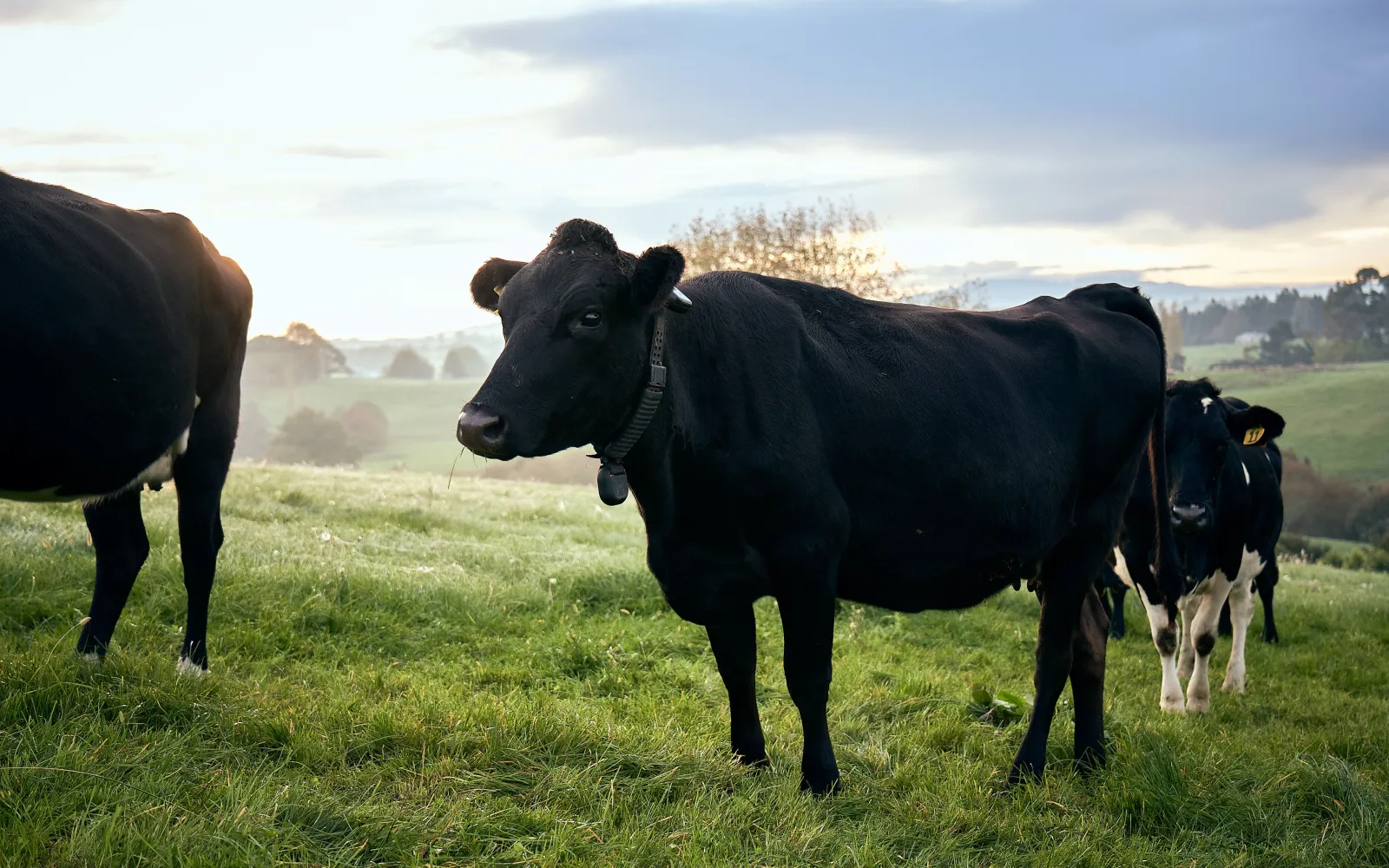

Halter
Improving farm performance and animal welfare through virtual fencing
A century and a half after barbed wire reshaped livestock farming, another fencing revolution is quietly underway. This time, it’s invisible and, in some cases, silent.
New Zealand-based Halter is at the forefront of this trend. Halter’s technology is elegant: GPS-enabled solar-powered smart collars for cattle that create virtual boundaries, actively guide the animals using sound and vibration, and monitor behavior and health in real time. Farmers manage the system using a smartphone app. No posts to pound, no wire to string, no physical infrastructure to maintain.
Since DCVC first invested in Halter in 2018, we’ve watched it grow to unicorn status, be used on over half a million cows worldwide, and expand across the Pacific to the United States. This week, Halter announced that its U.S. customers have created more than 11,000 miles of virtual fencing using its collars, an amount that’s roughly equal to the perimeter of the continental United States. Based on an average cost of about $20,000 per mile for conventional fencing installation and maintenance, that equates to roughly $220 million in savings, and we are just getting started.
It’s an impressive milestone, but the bigger story is what it signals about where ranching is headed. A few weeks ago, I saw this firsthand during a visit to one of Halter’s U.S. customers, a rancher in Wyoming. The rancher didn’t have spreadsheets calculating his ROI from Halter’s collars. He said he didn’t need them. The Halter license fee was a tiny fraction of the additional revenue he generated from better pasture utilization: managing more cattle on the same land with better weight gain from precision grazing. The math was so obvious that formal analysis felt unnecessary.
That’s when I knew we were watching something different from the typical ag-tech adoption curve. This is a tectonic shift. Given the economics, I’d be surprised to see serious pasture-based operations still pounding T‑posts and unspooling wire within five to ten years. The productivity gains are too substantial, and the operational flexibility too valuable.
Think about automatic milking machines. A few decades ago, every dairy relied on hand milking. Today, no commercial operation would even consider it. Virtual fencing is following the same trajectory, just faster. The ranchers adopting Halter today are establishing what will soon be the standard operating system for modern cattle management.
The economic case wins first. Lower infrastructure costs, better land utilization, reduced labor requirements – these are the hard returns that drive adoption. But what closes the deal is the lifestyle transformation that follows. Ranchers can finally make it to their kids’ soccer games. They can take actual vacations. The time they get back is worth more than any balance sheet can capture. Halter Founder and CEO Craig Piggott, who grew up watching his parents work 100-hour weeks running their New Zealand dairy farm, understands this better than most. It’s why he built the company.
There’s another benefit worth noting: independent research from the Tasmanian Institute of Agriculture found no increase in stress for cattle managed with Halter compared to traditional methods using electric fences and stockpeople. In fact, ranchers consistently report that their animals are calmer with the system – cattle walk at their own pace rather than being pushed by dogs or vehicles, and the collars actively guide them for only a few minutes per day.
As I stood with the Wyoming rancher watching his mob of 50 cows shift remotely from grazing in one part of the field to another part, it occurred to me that we were watching them move in complete silence – no mooing. The rancher explained that they were stress-free because of the lack of dogs barking or ranch hands on motorcycles whistling. Plus, the collar allows the mob to sort themselves into their natural order; young ones going first, then the herd leaders and seniors at the back. As the rancher said, less stress means better health and more weight gain: less mooing equals more moolah!
Right now, Halter is winning what I call the “ground battle” – converting ranchers one operation at a time based on demonstrable utility. When you solve a real problem with clear economics, the market responds.




